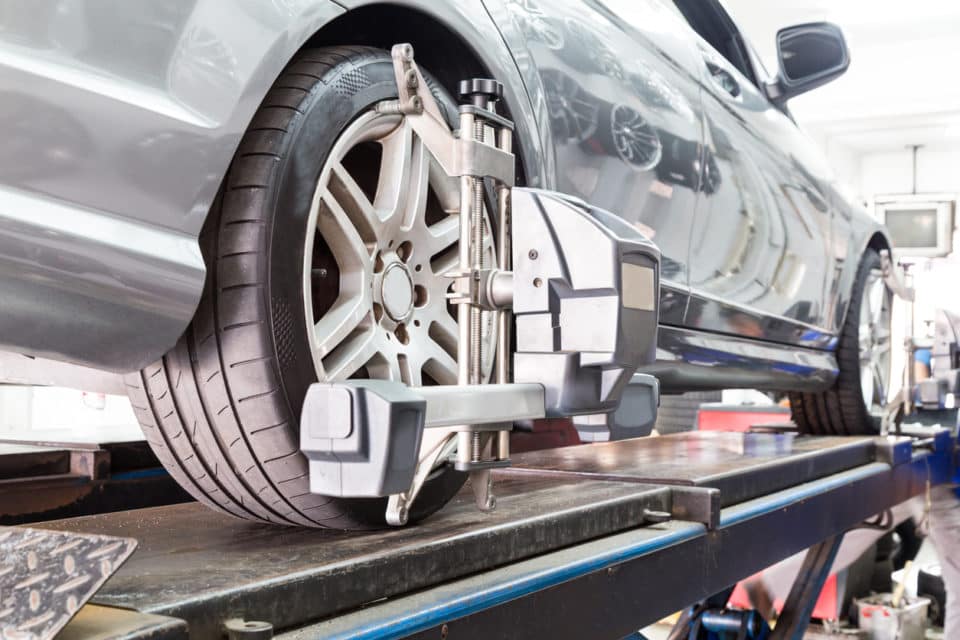
ALIGNMENT OVERVIEW
Wheel alignment is a much-misunderstood concept. While on the surface alignment seems a relatively simple thing, certain aspects of the performance of alignment itself are affected by many outside influences both on the vehicle itself and the driver and occupants. Let’s look a bit deeper into these concepts.
There are many operational factors that can affect the performance of the vehicles steering and tracking while in motion. External factors such as weather, wind, rain, heat, snow or ice can all affect the control of the vehicle while in motion. The actual road surface, pavement or concrete, the surface tension dry or wet, oily, rough gravel or dirt, and the crown of the road (this dispels water to the shoulder for drainage).
Other factors include the vehicle itself, its suspension and steering systems, the drive type such as rear wheel drive (RWD) all-wheel drive (AWD) four-wheel drive (4WD) and modifications to the vehicle such as lift or lowering kits or larger/wider tires and wheels for example.
Other factors include the modification of controls or enhancements to the system, such as traction control, stability control, collision avoidance systems, and the modification of the mathematical suspension geometry from its original form by the manufacturer resulting from add on or aftermarket equipment can have repercussions in performance, tire wear, parts longevity and overall steering feel while driving.
The current condition of the vehicle, its sum parts, components and systems, the maintenance level, and the driver are all performance factors that must be considered. Whew! That seems like a lot.
This all seems complicated. What does this mean to me?
Good question. The primary purposes and goals of wheel alignment come down to three common criteria with most vehicles today.
- The vehicle must drive straight with a minimum of lead or pull in either direction. Think letting go of the wheel (but don’t do it!) and have the car continue upon the same trajectory.
- The steering wheel position is relative to the car driving straight ahead. Think hands at the 10 and 2 position and not cockeyed.
- Abnormal tire wear is eliminated or minimized, protecting the investment in tires and making the ride and handling more enjoyable on a daily basis.
These factors are the basic premise of alignment. The outside factors, and the enhancements, the vehicle condition, the driver and their habits, and the maintenance level all affect the final product, the feel and performance of the vehicle while in motion.
PRO TIP! A common misconception is that vibrations while driving at speed or braking, noise, harshness, poor ride quality or wonkiness is an alignment issue. Not true. These are outside factors that alignment will not correct. Alignment in its simplest form will only resolve or improve upon the basic 3 noted above.
To find out more about wheel alignment and get a professional evaluation of your vehicle’s performance, tire wear and driving characteristics, talk to the professionals at Midwest Auto Services in Blue Springs, MO today!
You’ll be glad you did!
FAQ
Your vehicle could be out of alignment.
Your vehicle could be out of alignment.
Your vehicle’s misalignment is a leading cause for this.
Your alignment determines whether or not the tires meet the ground evenly. If the tires are offset to the ground by even a little you can wear them down unevenly.
